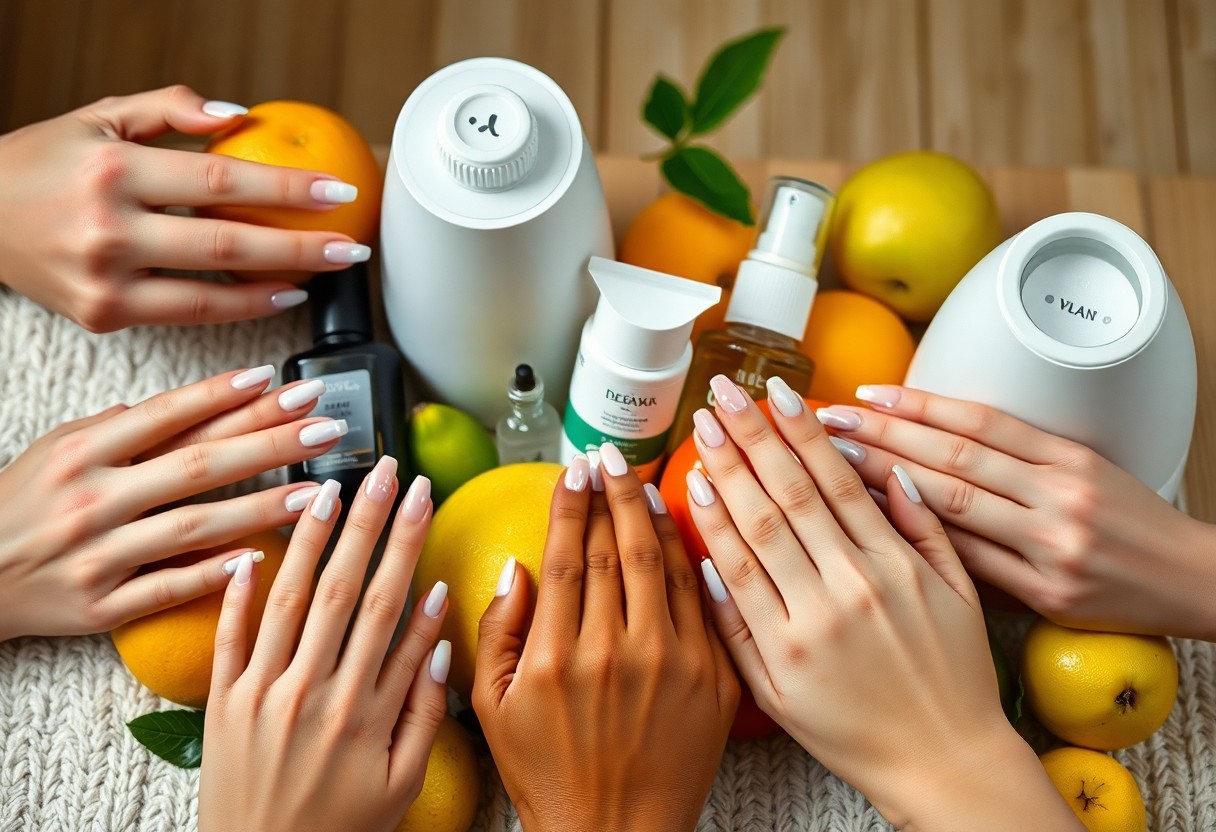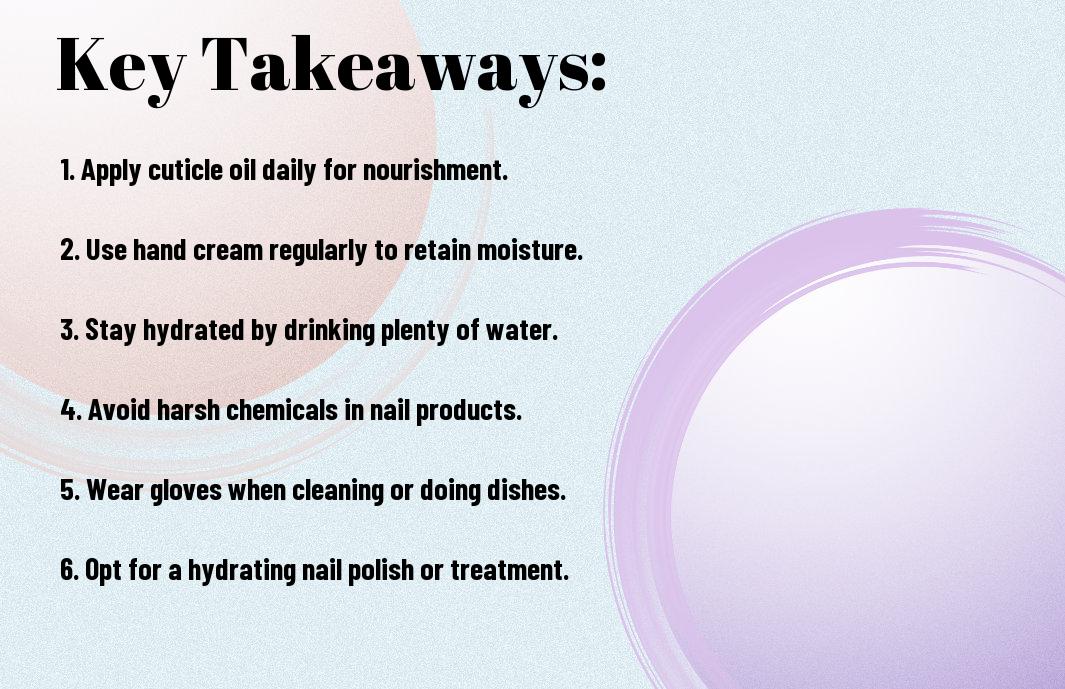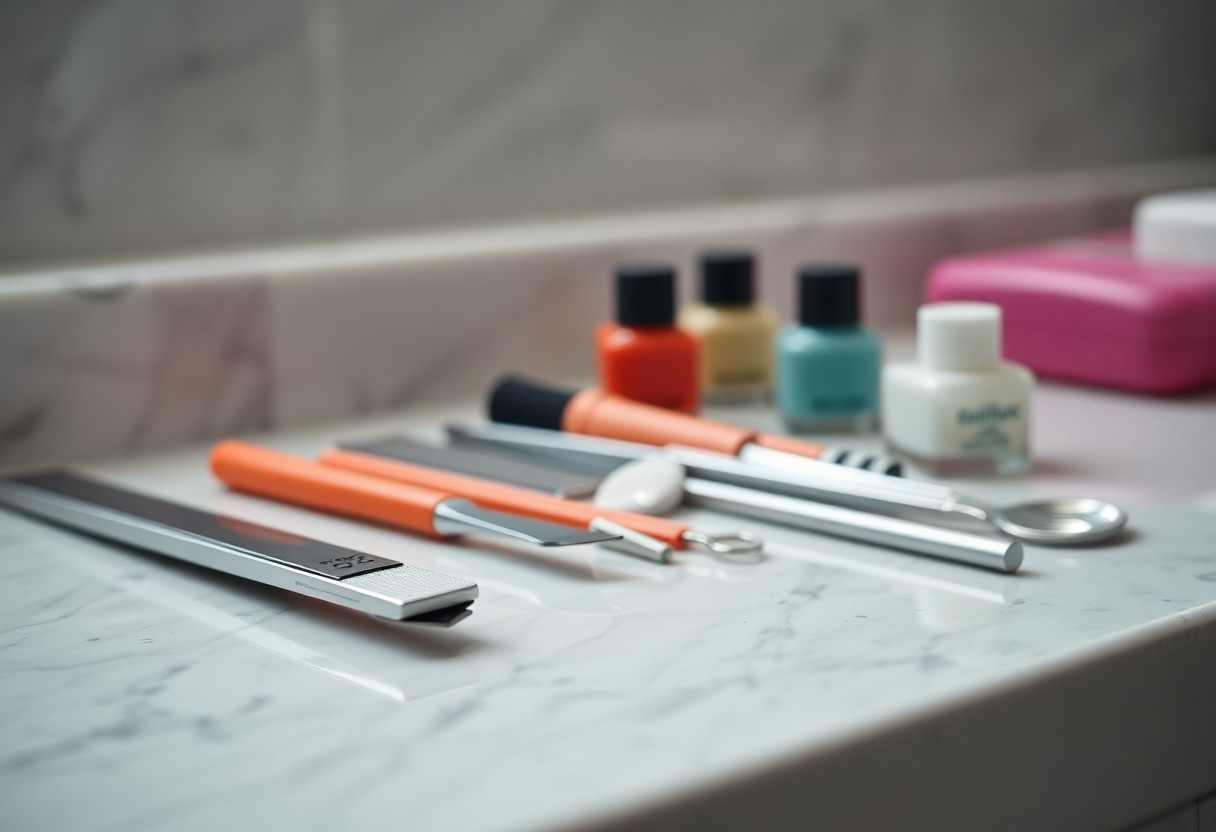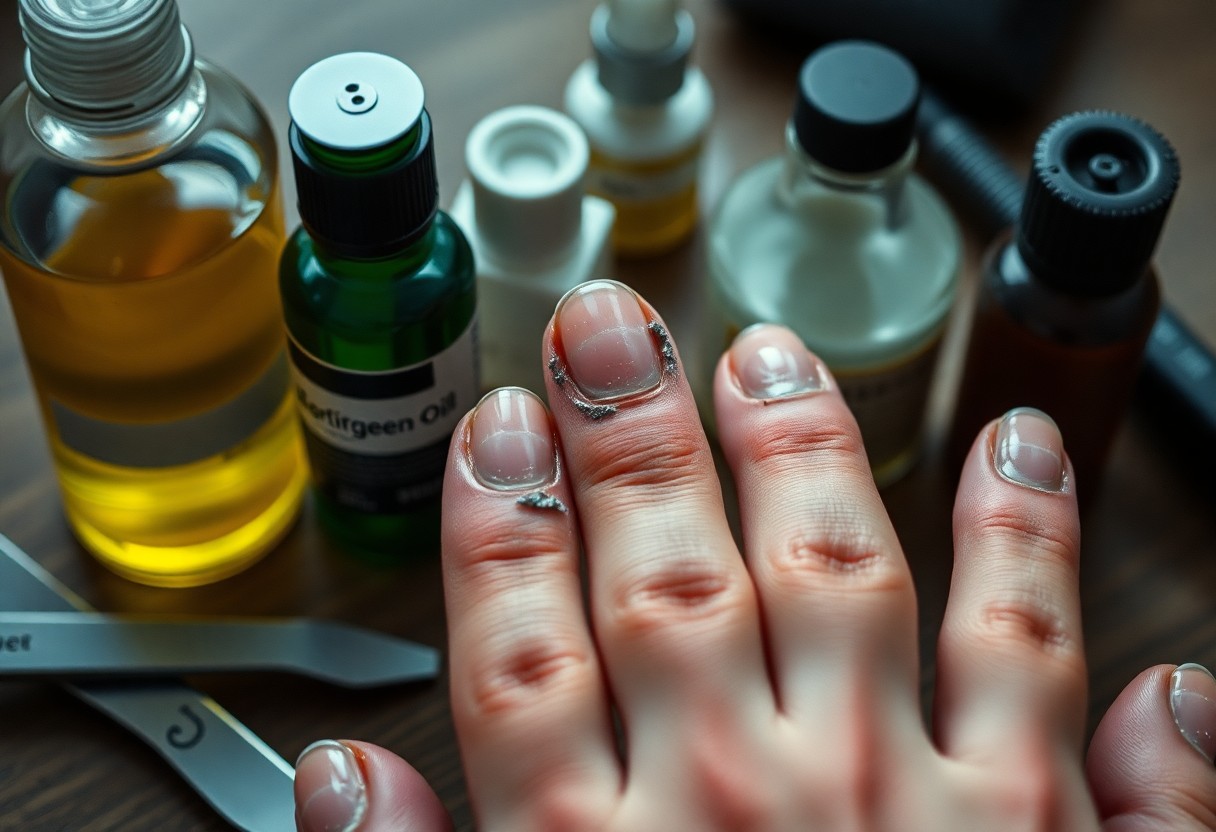Nails can reveal much about your overall health and well-being, including the impact of stress on your body. When you experience heightened levels of stress, it can manifest in various ways, including nail damage such as brittleness, discoloration, and even changes in growth patterns. Understanding this connection can help you better manage your stress and protect your nails. Research, such as Innovations in biological assessments of chronic stress, underscores the importance of recognizing how stress affects your physical appearance and health.
Key Takeaways:
- Stress Effects: High levels of stress can lead to various physical manifestations, including nail damage and changes in growth patterns.
- Nail Health: Conditions such as brittleness, peeling, and ridges may intensify due to prolonged stress, indicating overall health decline.
- Stress Management: Implementing relaxation techniques can improve nail health, as managing stress positively influences the body’s physical condition.
Understanding Stress and Its Effects
While stress is a common part of everyday life, it can significantly impact your physical health, including the condition of your nails. When you experience stress, your body goes through a variety of changes that can affect your overall well-being. Understanding these effects is imperative in recognizing how stress may contribute to nail damage, enabling you to take proactive measures for your personal care.
Psychological Stressors
Beside external pressures, psychological stressors such as anxiety, deadlines, and personal relationships can affect your mental state. When you face constant psychological pressures, you may unconsciously engage in behaviors like nail biting or other damaging habits, leading to weakened nails and overall nail health deterioration.
Physiological Response to Stress
An increased level of stress triggers your body to release various hormones, such as adrenaline and cortisol, which can alter your physiological state. This hormonal imbalance affects numerous bodily functions, including blood flow and nutrient delivery to your extremities, which may contribute to nail brittleness and breakage.
Due to the impact of stress on your body, nail health may suffer as vital resources are diverted to cope with perceived threats. Elevated cortisol levels can slow down nail growth and impair the natural repair processes of your body. This means that, in times of heightened stress, your nails may not receive the necessary care they need to remain strong and healthy. Understanding this connection highlights the importance of managing stress effectively for the sake of your nails and overall health.

Types of Nail Damage
One way to understand the impact of stress on your nails is by recognizing the different types of nail damage that can occur. These types can manifest in various forms:
- Brittleness
- Peeling or splitting
- Discoloration
- Indentations or ridges
- Thinning
The stress you experience can lead to noticeable changes in your nails, making them appear unhealthy. If you’re Feeling stressed? It can show in your skin, hair, and nails.
| Type of Damage | Description |
|---|---|
| Brittleness | Nails break easily and may feel weak. |
| Peeling | Nail layers start to separate and flake off. |
| Discoloration | Nails can turn yellow or develop dark spots. |
| Indentations | Fingernails may develop ridges or dips. |
| Thinning | Nails become noticeably thinner and fragile. |
Common Nail Conditions
Nail damage can lead to several common conditions that you might encounter. Some of these include hangnails, toenail fungus, and ingrown nails. Each condition can be exacerbated by stress, resulting in more severe symptoms or complications if left untreated.
Symptoms of Stress-Induced Nail Damage
An important aspect of stress-induced nail damage is recognizing its symptoms. You may notice that your nails become brittle, split easily, or change color, which can be a direct reflection of your stress levels. Additionally, your cuticles may appear dry and inflamed.
It’s important to stay attuned to these signs as they not only indicate stress but also point to potential health issues. If you find your nails exhibiting these symptoms, it may be worth examining your stress management techniques and seeking advice on how to improve your overall well-being.
The Science Behind Stress and Nail Health
Not everyone understands the intricate relationship between stress and nail health. When you’re stressed, your body undergoes various physiological changes that can negatively affect the growth and condition of your nails. Research indicates that stress may lead to reduced blood flow and nutrient delivery to the nails, diminishing their overall health and resilience.
Stress Hormones and Nail Growth
Nail growth can be significantly impacted by stress hormones like cortisol. Elevated cortisol levels disrupt the natural growth cycle of your nails, resulting in slower growth rates. As a result, you may notice that your nails become brittle or develop irregular growth patterns, making them more prone to damage.
Impact on Nail Structure and Strength
Among the most noticeable effects of stress is the weakening of your nails’ structure. High stress levels can lead to changes in your body’s chemistry that compromise the integrity of your nails. You may find that your nails become thinner and more susceptible to chipping or breaking, indicating that stress is having a tangible effect on their overall strength.
Nail health is directly correlated with how well your body copes with stress. When stress overwhelms your system, the structural proteins in your nails—such as keratin—can be adversely affected. This leads to nails that not only weaken but also may peel or become discolored, signalling that your stress levels could be impacting your beauty routine. Prioritizing stress management techniques can help in maintaining the strength and appearance of your nails.
Identifying Stress-Related Nail Damage
Now that you understand the potential impact of stress on your body, it’s imperative to recognize how it manifests in your nails. Stress-related nail damage can present unique characteristics, including changes in color, texture, and shape. You may find your nails becoming brittle, ridged, or even peeling, which are all signals that your body is experiencing heightened stress levels.
Signs and Symptoms
Any changes in your nails that coincide with increased stress levels can serve as warning signs. Look for symptoms like discoloration, unusual brittleness, or the presence of white spots. You might also notice your nails grow slower than usual or start to chip easily. Keeping an eye on these signs can help you catch stress-related issues early.
Diagnostic Approaches
Across various platforms, healthcare professionals advocate for proper assessment of your nails’ condition to determine if stress is contributing to any changes. This may involve a physical examination of your nails, as well as discussing your stress levels, lifestyle, and overall health. A comprehensive approach will help establish whether your nail issues stem from stress or another underlying cause.
Stress-related nail damage often requires a thorough evaluation to identify the source effectively. You may be asked to provide insight into your daily habits, emotional well-being, and any recent changes in your life that could contribute to elevated stress levels. Based on this information, your healthcare provider can recommend appropriate interventions or suggest lifestyle modifications to minimize stress and promote healthier nails.
Preventive Measures for Nail Health
All individuals seeking to maintain optimal nail health should incorporate a few preventive measures into their routines. Regularly moisturizing your hands and nails, avoiding harsh chemicals, and keeping your nails trimmed and shaped can significantly enhance their appearance and resilience. Additionally, consider exploring The Effects of Stress on Hair, Skin and Nails – ICA Health to understand how stress impacts your nail vitality and implement strategies to mitigate those effects.
Stress Management Techniques
One effective approach to maintaining your nail health is through stress management techniques. Incorporating practices like mindfulness, meditation, or yoga into your daily routine can help reduce stress levels that lead to nail damage. Finding activities that bring you joy and relaxation can also play a significant role in maintaining both your mental well-being and your nails.
Nutritional Support for Nails
An important factor in supporting nail strength and growth is proper nutrition. Ensuring that your diet is rich in vitamins and minerals, particularly biotin, zinc, and protein, can promote healthier nails and prevent damage. Foods like eggs, nuts, and leafy greens are excellent choices to enhance your nail health.
Management of your nail health can be significantly supported by focusing on balanced nutrition. Consuming adequate amounts of water, along with vitamins A, C, and E, can aid in maintaining hydrated and sturdy nails. Additionally, incorporating omega-3 fatty acids from fish or flaxseeds can help keep your nails smooth and reduce brittleness. Prioritizing a nutrient-rich diet ensures not only the health of your nails but the overall well-being of your body.
Treatments for Damaged Nails
Your path to healthier nails can involve a variety of treatments, from simple DIY applications to more advanced professional procedures. Incorporating nourishing products like oils, creams, and specialized nail treatments can help repair and strengthen your nails. It’s important to create a consistent care routine that focuses on restoring moisture and minimizing further damage, setting the stage for your nails’ natural regeneration process.
Home Remedies
Beside conventional treatments, numerous home remedies can support the healing of damaged nails. Simple ingredients like coconut oil, olive oil, and vitamin E can deeply hydrate and strengthen your nails. Soaking your nails in warm water mixed with a few drops of vital oils can also promote growth and improve their overall appearance.
Professional Interventions
Across the spectrum of nail care, professional interventions may be needed for more severe nail damage. Consulting with a dermatologist or a certified nail technician can offer you targeted solutions, such as prescription-strength treatments or customized nail care regimens tailored to your specific needs. These professionals can assess the extent of your nail damage and recommend appropriate therapies.
Nails can often benefit from advanced treatments like laser therapy or chemical peels, designed to stimulate growth and improve texture. Additionally, filing and shaping by a professional can correct issues caused by uneven growth or breaks. Regular visits can ensure that any underlying issues are addressed while promoting healthy nail development. Through these expert treatments, you can restore your nails to their natural beauty and resilience.

Summing up
On the whole, understanding the connection between stress and nail damage can help you take proactive measures to care for your nails. High stress levels can lead to habits like nail-biting or picking, which compromise nail health. By managing your stress through techniques such as mindfulness, exercise, or seeking support, you can protect not only your mental well-being but also the appearance and strength of your nails. Prioritizing self-care will enable you to maintain healthier nails and reduce the impact of stress on your overall health.
Q: How does stress contribute to nail damage?
A: Stress can lead to nail damage in various ways. When individuals experience high stress levels, it often manifests in physical habits such as nail biting or picking, which can weaken the nail structure and lead to breakage. Additionally, during stressful periods, the body may divert nutrients away from non-vital areas like nails, resulting in slower growth or brittleness. Hormonal changes induced by stress can also affect the health of nails.
Q: What are the common signs of nail damage linked to stress?
A: Signs of nail damage due to stress may include increased brittleness, split or peeling nails, and changes in color or texture. Individuals might also notice an increase in nail biting or the development of hangnails due to stress-induced habits. These symptoms not only impact the appearance of nails but can also lead to discomfort or pain if left unchecked.
Q: What strategies can help mitigate the effects of stress on nail health?
A: To reduce nail damage associated with stress, individuals can consider implementing stress management techniques such as mindfulness meditation, regular physical activity, or engaging in hobbies that promote relaxation. It may also help to maintain a balanced diet that includes vital vitamins and minerals for nail health, such as biotin and zinc. Furthermore, practicing good nail care hygiene, including proper trimming and moisturizing, can enhance resilience against stress-induced damage.




